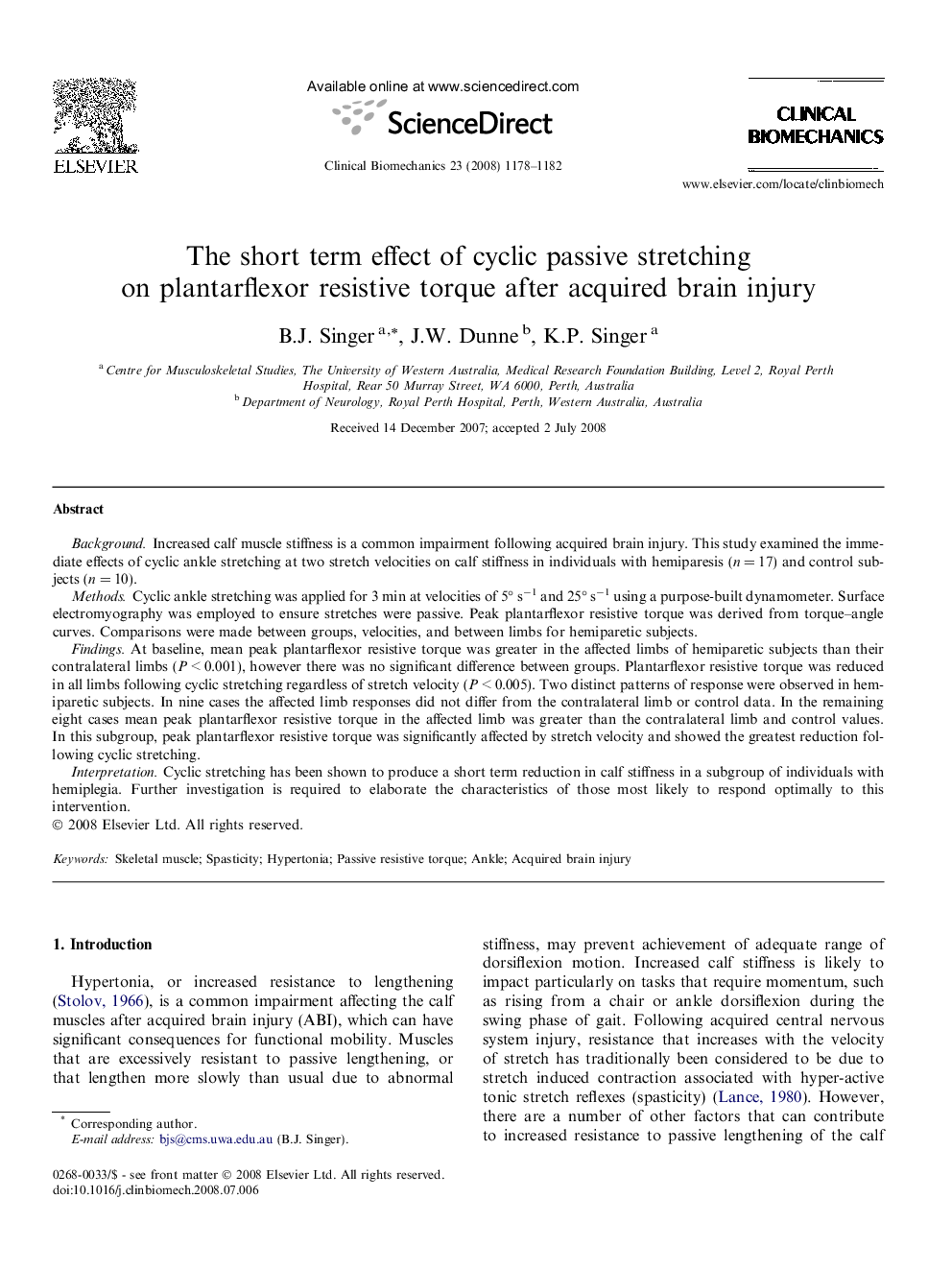| Article ID | Journal | Published Year | Pages | File Type |
|---|---|---|---|---|
| 4051169 | Clinical Biomechanics | 2008 | 5 Pages |
BackgroundIncreased calf muscle stiffness is a common impairment following acquired brain injury. This study examined the immediate effects of cyclic ankle stretching at two stretch velocities on calf stiffness in individuals with hemiparesis (n = 17) and control subjects (n = 10).MethodsCyclic ankle stretching was applied for 3 min at velocities of 5° s−1 and 25° s−1 using a purpose-built dynamometer. Surface electromyography was employed to ensure stretches were passive. Peak plantarflexor resistive torque was derived from torque–angle curves. Comparisons were made between groups, velocities, and between limbs for hemiparetic subjects.FindingsAt baseline, mean peak plantarflexor resistive torque was greater in the affected limbs of hemiparetic subjects than their contralateral limbs (P < 0.001), however there was no significant difference between groups. Plantarflexor resistive torque was reduced in all limbs following cyclic stretching regardless of stretch velocity (P < 0.005). Two distinct patterns of response were observed in hemiparetic subjects. In nine cases the affected limb responses did not differ from the contralateral limb or control data. In the remaining eight cases mean peak plantarflexor resistive torque in the affected limb was greater than the contralateral limb and control values. In this subgroup, peak plantarflexor resistive torque was significantly affected by stretch velocity and showed the greatest reduction following cyclic stretching.InterpretationCyclic stretching has been shown to produce a short term reduction in calf stiffness in a subgroup of individuals with hemiplegia. Further investigation is required to elaborate the characteristics of those most likely to respond optimally to this intervention.
